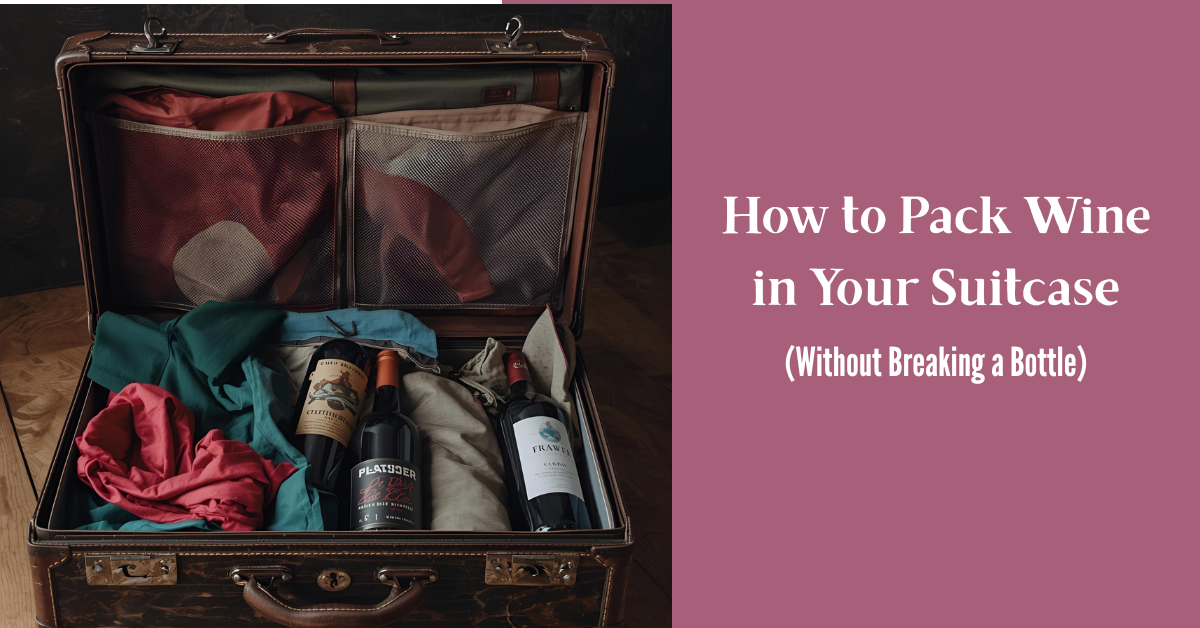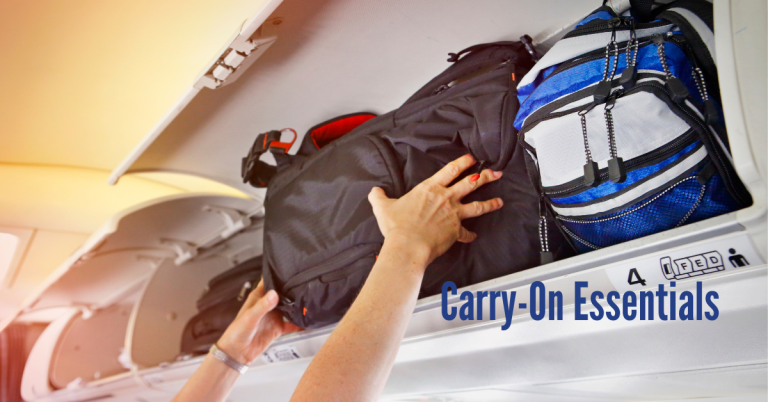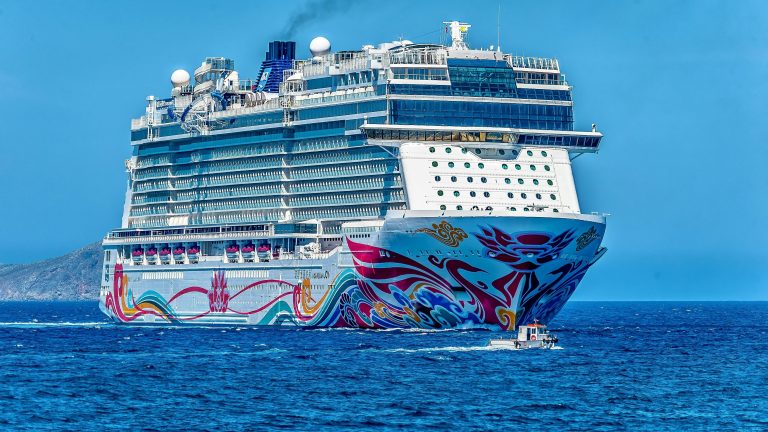How to Pack Wine in Your Suitcase (Without Breaking a Bottle)
If you’ve ever fallen in love with a bottle while traveling and wanted to bring it home, you know the struggle: how to pack wine in your suitcase without it breaking (or soaking your clothes). Here’s what’s worked for me, from Napa to Woodinville.
The Struggle Is Real: Bringing Wine Home from Your Travels
There’s nothing like that “I have to bring this home” moment in a tasting room. I felt it big time in Woodinville, after a lineup that included stops like Jaine, DeLille, and Long Shadows, I was smitten. I picked a couple of bottles I knew I’d want to open on a cozy fall night and immediately started playing suitcase Tetris in my head: sweaters, jeans, shoes… where do the bottles go?
Napa brought the same happy dilemma. After a beautiful visit to Trefethen, I grabbed a bottle that tasted like sunshine in a glass and thought, “Okay, Steph, let’s not test the baggage handlers.” I’ve had that tiny jolt of panic watching my bag roll away on the conveyor belt, wondering if my favorite bottle would make it home intact—or turn my clothes into a Cabernet crime scene.
If you’ve been there too, you know the feeling: fragile bottles, bumpy flights, and less-than-gentle luggage handling can spell disaster. The good news? With a few simple tools and smart packing tricks, you can safely bring those special finds home and relive your travels, one pour at a time.

TSA Rules for Packing Wine in Checked Luggage
Before we get into the how, let’s talk about the can you. The good news is, yes, you can absolutely bring wine home in your luggage. You just need to follow a few simple rules so TSA and customs don’t rain on your post-vacation parade.
Here’s the breakdown:
- Carry-on? Not so much. Anything over 3.4 ounces (100 ml) isn’t allowed through security, so your wine bottles need to go in checked luggage.
- Checked bags? Go for it. As long as the wine is under 24% alcohol by volume (which most table wines are), there’s no limit on how many bottles you can pack.
- Stronger stuff (24–70%) —like fortified wines or spirits —has a cap of 5 liters per person, and bottles must be unopened and in their original packaging.
- International travel: if you’re coming back from abroad, you can bring up to 1 liter duty-free into the U.S. Anything beyond that just needs to be declared. (Don’t worry. It usually just means paying a small tax, not losing your bottles.)
The key takeaway? As long as your bottles are sealed, packed properly, and checked, you’re in the clear to bring home your new favorite finds.
What You’ll Need: Wine Travel Essentials
Packing wine doesn’t have to feel like a balancing act between souvenirs and shattered glass. With a few handy travel tools, you can protect your bottles and keep your clothes stain-free. These are my go-to essentials when I’m planning to bring wine home.
• Wine travel sleeves or bottle protectors
Reusable sleeves like WineSkin or JIMEI inflatable are worth every penny. They’re leak-resistant, cushioned, and TSA-friendly, basically a travel insurance policy for your favorite bottles.
• Clothing as padding
If you’re in a pinch, sweaters, jeans, or scarves make great impromptu padding. Just remember to add a plastic layer first in case of leaks.
• Ziplock or plastic bags
Simple but smart. Slide each bottle into a gallon-size Ziplock before wrapping it in clothes or placing it in a protector. It adds an extra layer of protection if the pressure changes mid-flight.
• Hard-shell suitcase
A good hard-sided suitcase helps absorb impact better than a soft one. Keep bottles in the center, where there’s more cushion on all sides.
• Dedicated wine luggage (for the serious traveler)
If you’re planning a full wine trip—think Napa, Sonoma, or Europe—specialized bags like the VinGardeValise or FlyWithWine cases can hold multiple bottles in foam-lined compartments. It’s a splurge, but peace of mind is priceless when you’re hauling home treasures.
Step-by-Step: How to Pack Wine in Your Suitcase
Now that you’ve got the right tools, it’s time to put them to work. Here’s my tried-and-true method for packing wine so it arrives home safe, sound, and ready to pour:
- Start with protection.
Slip each bottle into a wine sleeve or wrap it tightly in a plastic bag. Even a simple Ziplock can be a lifesaver if there’s a leak. - Wrap it up.
Use soft clothing like jeans, sweaters, or jackets to create a cushion around each bottle. I like to roll the bottle in a thick sweater before placing it in the suitcase. - Center is safest.
Always pack your bottles in the middle of your suitcase, never near the edges. That way, your clothes act as shock absorbers on all sides. - Stabilize with structure.
Fill empty spaces with smaller items, such as shoes, socks, or toiletries, to keep bottles from shifting around in transit. - Add a top layer.
Once all bottles are nestled in, cover them with another layer of clothing. It helps prevent pressure damage if the bag gets stacked or bumped. - Keep them snug, not squished.
Close your suitcase and give it a gentle shake. If nothing moves, you’re good. (If it sounds like a rattle, repack until it doesn’t!)
This process has saved me on more than one wine trip; everything from Washington rosé to Napa Chardonnay has made it home safely using this method.
Bonus Tips from The Pouring Passport
After plenty of trial and (almost) error, I’ve learned a few lessons that make traveling with wine a whole lot easier.
• Always pack with wine in mind.
If there’s even a chance you’ll buy bottles, leave extra room in your suitcase on the way out. I’ve definitely been that person rearranging clothes in an airport hotel trying to make room for “just one more bottle.”
• Bring a foldable duffel.
A lightweight, packable duffel bag can save the day when your main suitcase suddenly turns into a mini wine cellar. You can shift clothes or shoes to the duffel and check the sturdier bag with your bottles.
• Don’t underestimate shipping.
If you’re visiting wineries, especially in Napa, Sonoma, or Woodinville, ask about shipping options. Many wineries can safely send bottles straight to your door, sometimes even cheaper than checking another bag.
• Add a backup layer of protection.
If you’re worried, a trash bag around your packed section (inside the suitcase) can be an extra safeguard against leaks. It’s not glamorous, but it works.
• Keep a souvenir cork or tag.
I love labeling bottles with the winery name and date visited. When I finally open one months later, it’s like reliving the trip all over again.
Final Pour
Bringing home a bottle (or three) from your travels is one of my favorite souvenirs; it’s a little piece of the trip you can uncork later. Whether it’s a crisp Chardonnay from Napa or a rosé from Woodinville, those bottles tell a story. With just a bit of planning and smart packing, you can make sure they arrive safely, no broken glass, no Cabernet-soaked sweaters, just memories ready to pour.
Looking to level up your next wine-country escape? Be sure to check out my Stress-Free Guide to Planning a Wine Tasting Trip for full travel planning tips, winery pacing advice, and the packing perspective that makes every visit smooth.





